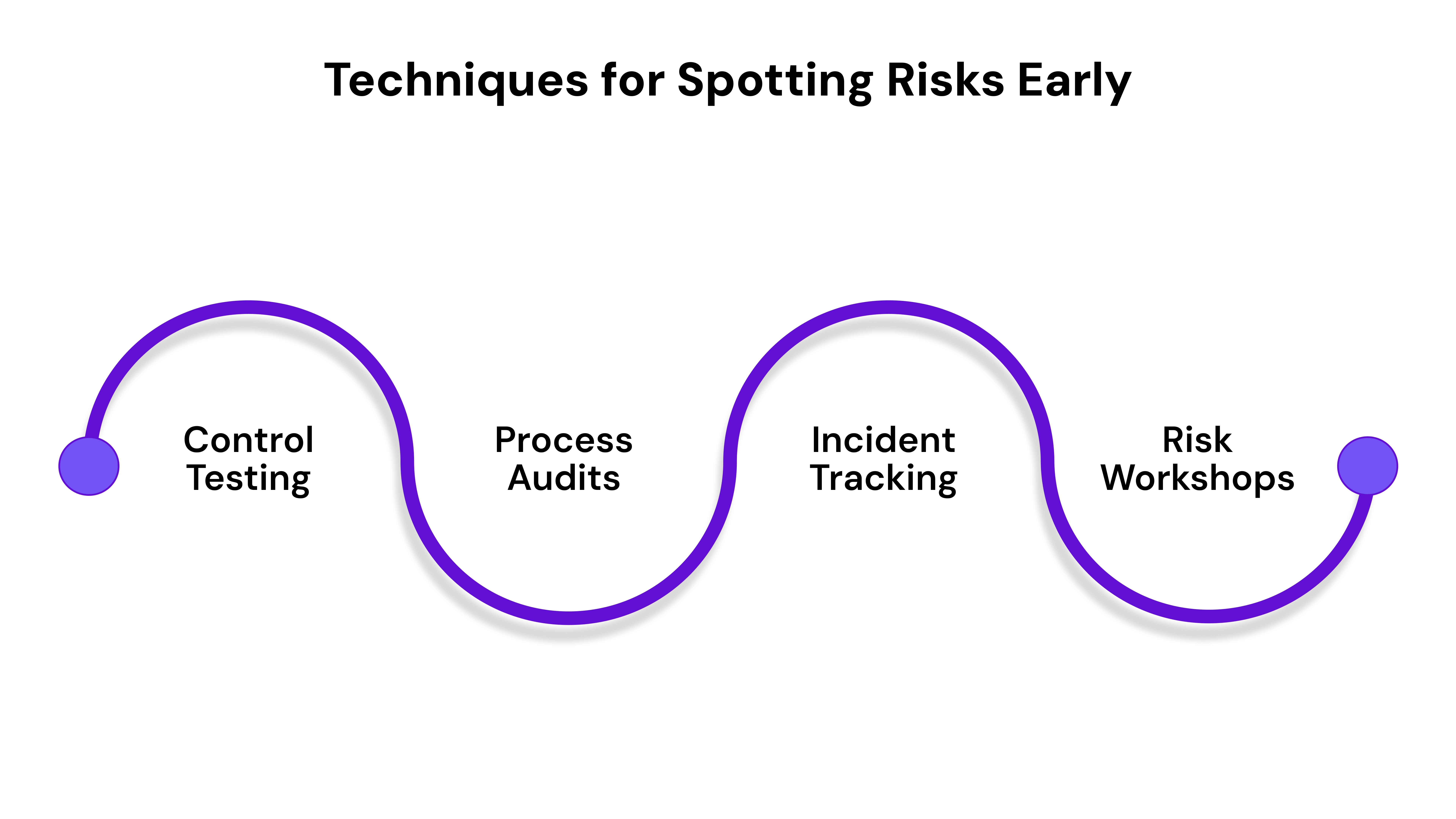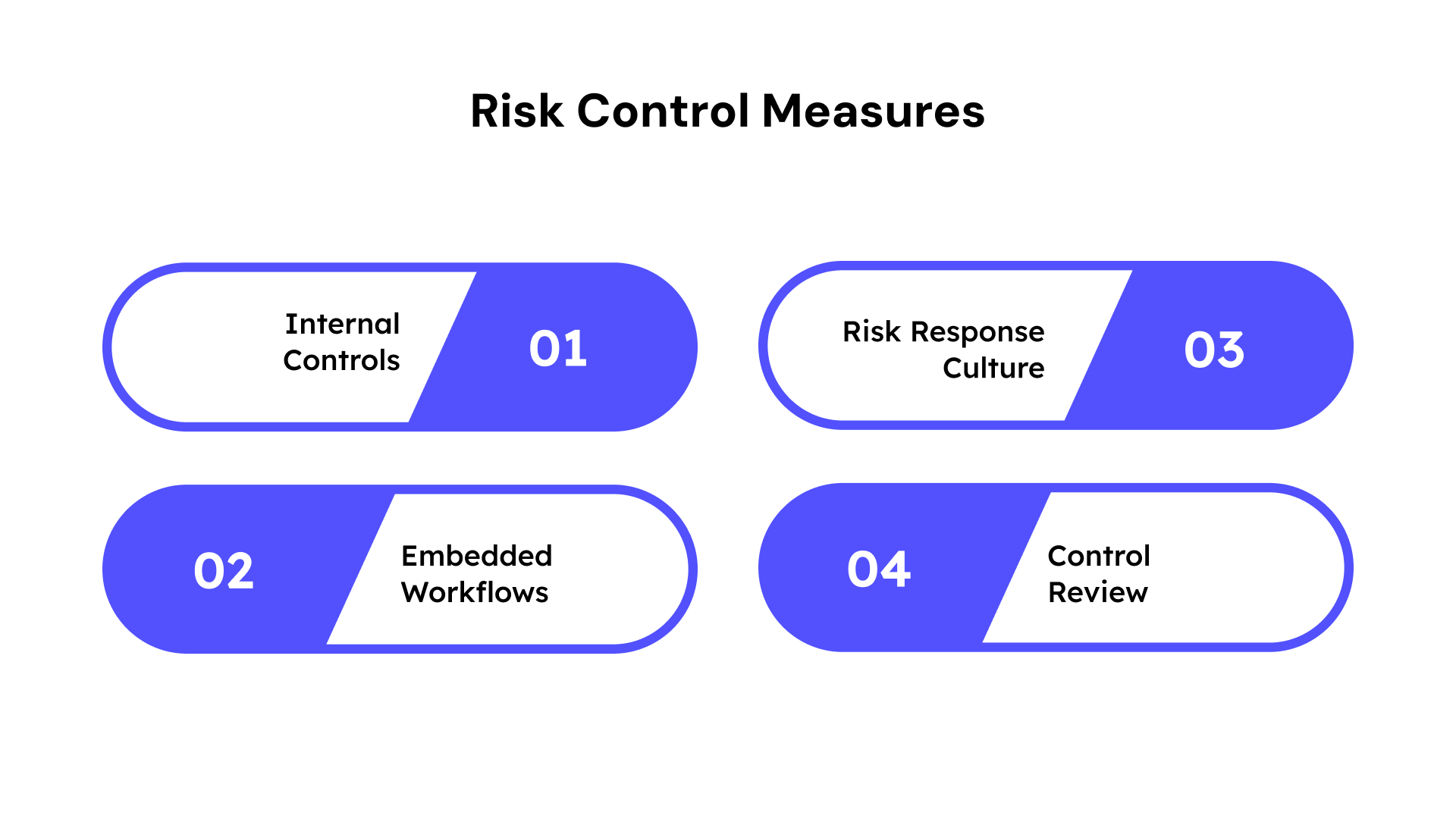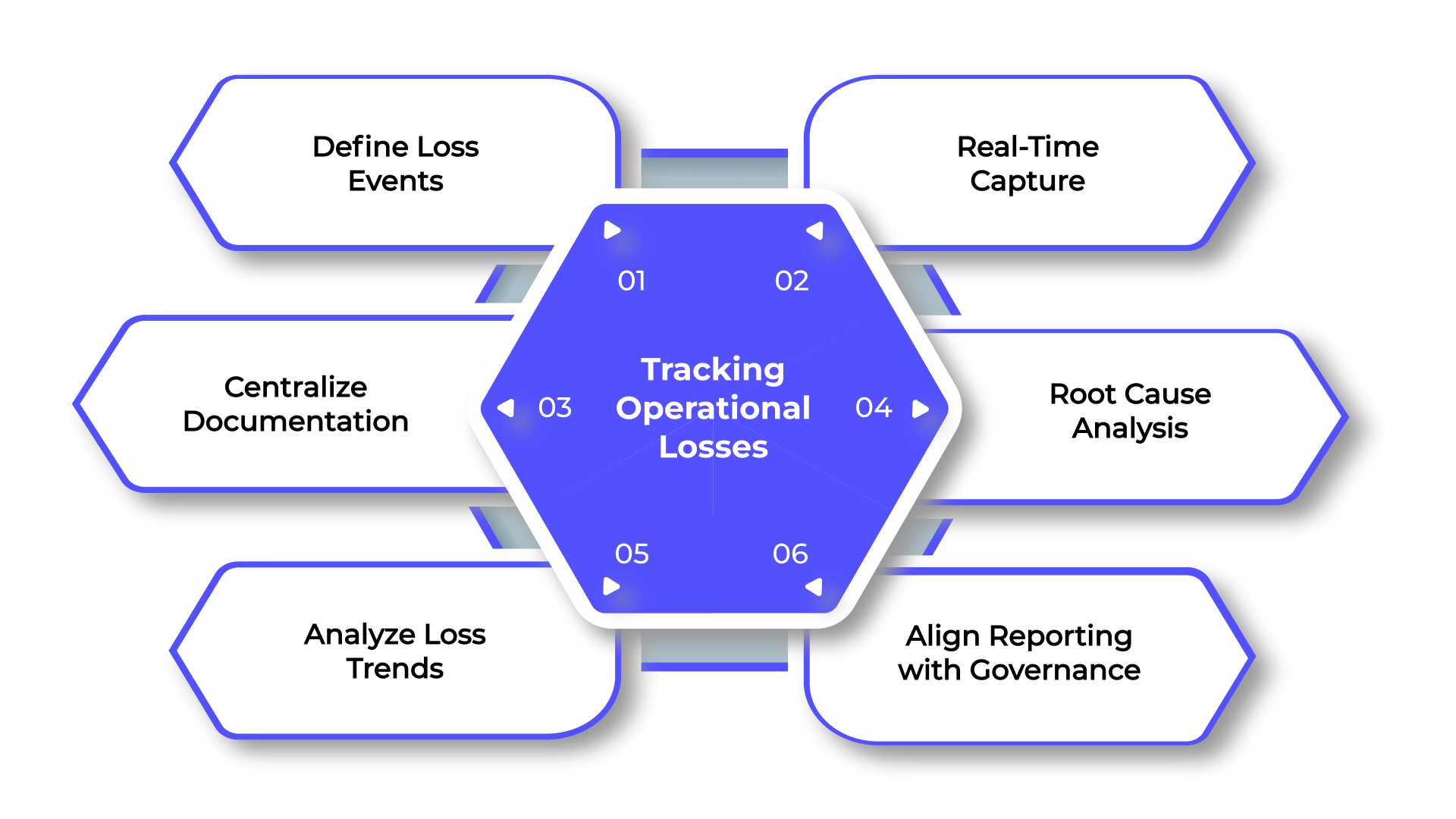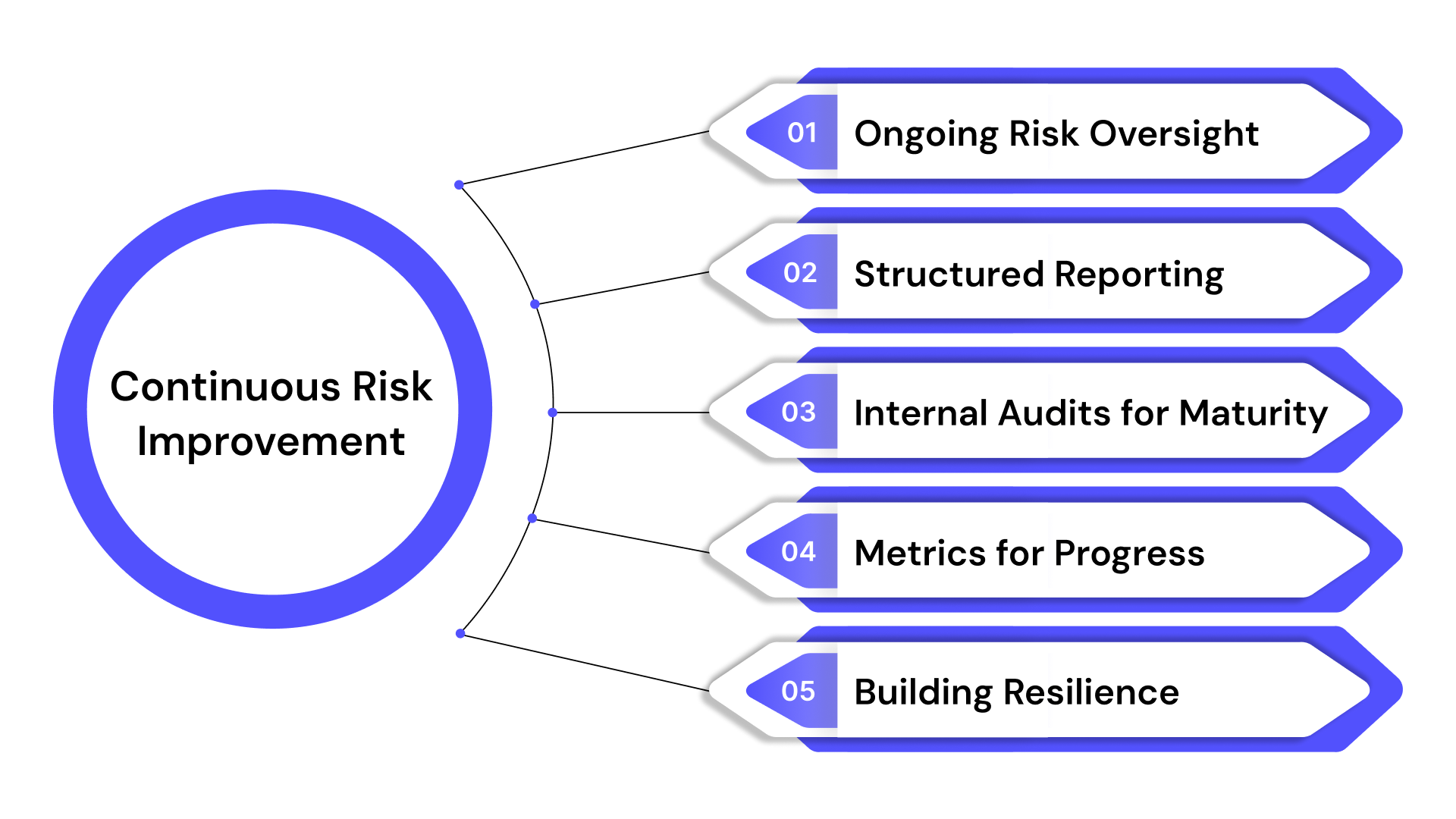How to Manage and Measure Operational Risk: Best Practices
Operational risk refers to the potential losses that arise from failures in internal processes, people, systems, or external events. Unlike market or credit risks, it’s part of everyday operations, from system outages and employee mistakes to third-party failures and compliance breaches. If not managed properly, operational risks can disrupt processes, damage trust, invite penalties, and reduce consistency. A strong operational risk management (ORM) strategy, aligned with regulations like SOX and FFIEC frameworks, helps organizations anticipate issues, respond quickly, and build long-term resilience. By actively managing and measuring operational risk, businesses can ensure compliance, identify weaknesses, and boost performance across all levels.

Quite often, you’re under constant pressure to protect your organization from risk exposure, regulatory scrutiny, and critical process failures. The stakes are high: a single missed control, a delayed response, or an outdated workflow can trigger financial losses and lasting reputational damage.
Many teams still rely on fragmented tools, manual checklists, and reactive methods to manage this now-critical risk function. It’s no surprise that the U.S. operational risk management market is projected to grow at a CAGR of 9.6% by 2034, reflecting rising urgency and investment in smarter solutions.
To build real resilience, you need more than compliance. You need full visibility, consistent structure, and systems that evolve as quickly as the risks you face. It’s not about adding more layers of oversight; it’s about gaining the control, clarity, and foresight to act before risks escalate.
Key Takeaways (TL;DR)
In this article, let’s start by defining what operational risk is and why it matters now more than ever.
- Strong internal controls and clear accountability reduce risk exposure and prevent operational breakdowns.
- Risks come from both internal issues and external events, so early detection through audits and incident tracking is critical.
- Use both data and expert insight to measure risk accurately and prioritize responses effectively.
- Track loss events, validate causes, and update a live risk register to improve mitigation and oversight.
- Improve continuously by reviewing trends, audit findings, and control performance to keep your risk program effective.
What Is Operational Risk and Why Does It Demand a Structured Approach?
Operational risk is the potential for loss resulting from failures in internal processes, people, systems, or external events. Unlike market or credit risk, it’s embedded in your day-to-day operations from system outages and employee errors to third-party failures and compliance breaches.
Unmanaged operational risk disrupts processes, damages trust, invites penalties, and weakens consistency. Therefore, a proactive, structured approach helps you anticipate, respond faster, and build long-term resilience.
A strong operational risk management (ORM) strategy aligns with regulatory standards such as SOX, OCC guidelines, and FFIEC frameworks. These are catalysts for building disciplined, auditable, and scalable risk practices across your organization.
Managing and measuring operational risk with intent ensures you are compliant and confident with systems. This helps you detect weaknesses, enforce accountability, and drive performance across all levels.
Also Read: How to Manage Operational Risk?
Identifying Sources of Operational Risk
No organization is immune to disruption, but risks often hide in daily operations, missed handoffs, system glitches, or unclear roles. When things go wrong, the cost is not just financial, but reputational, strategic, and regulatory.
To manage operational risk effectively, you need to start with visibility into where risks emerge, how they spread, and why they persist.
The Two Sides of Operational Risk
Operational risks generally stem from two categories:
- Internal Risks: These originate from within the organization, process gaps, human errors, system failures, or inadequate controls.
- External Risks: These are driven by events outside your control, such as cyberattacks, third-party failures, natural disasters, or regulatory shifts.
Understanding these categories helps you see risk not just as isolated events, but as patterns tied to how your organization operates.
What Drives Risk Within Your Environment?
Risk drivers vary by industry and maturity level, but common ones include:
- Manual or outdated processes that limit oversight
- Poor communication between departments or business units
- Lack of formal ownership or accountability for controls
- Inconsistent policy enforcement
- Rapid changes (e.g., expansion, tech upgrades, vendor shifts) without proper risk evaluation
With VComply’s RiskOps platform, you can map these drivers across business functions, assign ownership, and track them as structured, auditable data points, rather than informal red flags that surface too late.
Also Read: Effective Strategies for Risk Identification in Business Management
Techniques for Spotting Risks Early

To move from reactive to proactive risk management, consider:
1. Control Testing: Don’t assume controls are working; verify them. Regular control testing ensures your safeguards are functioning as intended and aligned with regulatory expectations.
2. Process Audits: Every workflow has pressure points. Process audits provide a clear lens into where things slow down, fall through the cracks, or become overly reliant on manual effort.
3. Incident Tracking: Small failures often signal larger patterns. A centralized system to report and track incidents, including near misses, helps identify repeat issues across teams, vendors, or processes.
4. Risk Workshops: Risk isn’t isolated to one team. Workshops bring together stakeholders across departments to review operations, flag vulnerabilities, and pressure-test assumptions.
When you know where risks originate and how they behave, you can build systems that respond faster and smarter.
How to Control and Mitigate Operational Risk

When risk becomes reality, it rarely announces itself in advance. It emerges quietly through inconsistent processes, unchecked access, or gaps in accountability. That’s why strong control measures are important to building trust, avoiding disruption, and staying audit-ready under constant scrutiny.
1. Designing Internal Controls That Reduce Exposure
Risk management begins with clarity, not just about where threats exist, but how they can be prevented, contained, and corrected. Internal controls are the foundation of this clarity.
When designed thoughtfully, they ensure that processes are executed consistently, responsibilities are clearly defined, and errors are caught before they escalate into serious issues. These controls must align with your operational realities, compliance obligations, and the pace at which your business evolves.
Also read: How to effectively implement internal controls to build a strong compliance culture?
2. Embedding Controls Into Daily Workflows
The most effective controls are embedded directly into workflows. Rather than relying on post-event corrections, well-placed preventive controls limit exposure at the source.
Automated approvals, system-enforced access rights, and real-time monitoring create safeguards that don’t rely on memory or manual effort. But implementation is only the beginning; these controls must be supported by consistent ownership and continuous oversight.
3. Creating a Culture of Risk Response
Risk mitigation must also live beyond documentation. It should be a visible part of how teams operate every day. When responsibilities are clearly assigned and risk response procedures are well understood, action becomes faster and more precise.
Building this into the organizational mindset requires strong leadership engagement and cross-functional collaboration. Routine exercises are essential to bring potential threats into focus before they cause disruption.
4. Continuously Reviewing Control Effectiveness
However, no control remains effective indefinitely. As technology, regulations, and business models shift, your control environment must adapt in parallel. A strong review cadence ensures that what was once effective remains aligned with current realities.
This includes evaluating incident data, assessing the root causes of control failures, and incorporating feedback from audits or frontline teams. Continuous improvement ensures that controls don’t just exist; they evolve.
Strategies for Measuring Operational Risk
Operational risk can’t be reduced without a clear understanding, and that starts with consistent measurement. In regulated settings, vague assumptions lead to missed obligations and reputational damage. A structured approach enables proactive, strategic risk management.
1. Establish Key Risk Indicators That Reflect Real Exposure
Key Risk Indicators (KRIs) serve as measurable signals of potential operational vulnerabilities. Unlike broad performance metrics, KRIs focus on conditions that precede failure, giving leadership time to intervene before disruptions occur.
Effective KRIs should:
- Be directly linked to core operational and compliance functions
- Reflect thresholds for acceptable performance or deviation
- Be monitored regularly to identify trends and emerging issues
Also read: Key Risk Indicators: Understanding and Developing KRIs
2. Combine Quantitative and Qualitative Approaches
While data offers objectivity, it does not always capture nuance. A mature risk measurement framework uses both quantitative and qualitative inputs to create a balanced, accurate view of exposure.
Quantitative methods include:
- Analysis of historical loss data
- Incident and control failure rates
- Financial impact of risk events
Qualitative methods provide forward-looking context:
- Scenario planning exercises
- Expert assessments and interviews
- Risk perception surveys across departments
Together, these approaches create a more comprehensive understanding, strengthening both reporting integrity and risk strategy alignment.
3. Developing a Risk Assessment Matrix for Comprehensive Evaluation
Measurement alone is not enough; operational risks must be evaluated in a structured way that supports prioritization and response. A risk assessment matrix provides a consistent framework for evaluating the potential impact and likelihood of risk events. It allows decision-makers to classify and compare risks objectively, ensuring that resources are directed where they are most needed.
At its core, the matrix assigns each risk a rating based on two dimensions:
- Likelihood: How probable is it that the risk will occur?
- Impact: If it does occur, how significant will the consequences be?
This method allows risks to be grouped by severity, supporting faster and more defensible decision-making.
Also Read: Steps to Identify and Measure Risk Management Techniques and Metrics
How to Track Operational Losses

Tracking operational losses is a critical component of a mature risk management program. These losses provide concrete evidence of where controls have failed, where oversight was insufficient, or where vulnerabilities remain unresolved.
Step 1: Establish a Clear Definition of Loss Events
Begin by defining what qualifies as a loss event within your organization. This may include financial penalties, legal settlements, fraud incidents, system outages, or internal process failures with a measurable impact. A clearly documented definition ensures consistency across departments and allows teams to report incidents accurately.
Step 2: Implement Real-Time Capture at the Point of Occurrence
Loss events should be recorded immediately after they occur while the context is still fresh and the details are reliable. This includes who was involved, what failed, the financial or operational impact, and any immediate remediation actions taken. Capturing this data at the source ensures both accuracy and accountability.
Step 3: Centralize Documentation and Categorization
Once recorded, loss events should be stored in a centralized system that supports standardized categorization. Categorizing by cause (e.g., process failure, human error, vendor issue), impact type, and business unit makes the data easier to analyze. A system like RiskOps ensures consistency in how losses are logged, documented, and escalated.
Step 4: Review and Validate with Root Cause Analysis
Each loss event should be reviewed for completeness and verified through root cause analysis. This process uncovers the underlying issue that led to the event, whether it’s a failed control, a missing procedure, or an oversight in compliance. Validating the cause helps prevent recurrence and supports internal learning.
Step 5: Analyze Loss Trends for Strategic Insight
Loss data should not sit in isolation. Analyze it regularly to identify patterns such as recurring control failures, departmental risk concentration, or rising incident frequency in specific business areas. These insights inform your broader risk mitigation strategies and help refine key risk indicators (KRIs).
Step 6: Align Loss Reporting with Governance Priorities
Ensure that loss data feeds directly into governance processes, including board reporting, risk committee updates, and compliance reviews. Loss tracking is not just operational; it supports strategic oversight and demonstrates your commitment to transparency and continuous improvement.
Step 7: Maintain a Centralized, Living Risk Register
Loss events, once captured and analyzed, should feed into a centralized risk register. This is where risks are formally documented, categorized, assigned owners, and tracked over time. The register transforms incident data into structured accountability, giving leadership a real-time view of unresolved risks and mitigation progress.
A good risk register includes:
- A clear description of the risk and its root cause
- Impact and likelihood scores
- Linked controls and current mitigation status
- Assigned owner responsible for follow-through
The register should be continuously updated. Review it regularly to reflect new incidents, audit findings, regulatory changes, and shifts in business priorities.
Also read: How to Use a Risk Register for Effective Risk Tracking and Mitigation: A Step-by-Step Guide
How to Keep Risk Programs Evolving

Risk management must evolve with the business, its environment, and its obligations. In regulated industries, where expectations are high and resources are often stretched, continuous improvement is a requirement for resilience.
1. Make Oversight a Continuous Practice
Effective risk management does not end with documentation or mitigation. It requires sustained oversight, regular evaluation, and a culture that supports continuous improvement. In regulated industries, where operational failures can result in regulatory scrutiny or reputational damage, static risk programs fall short.
A commitment to ongoing refinement ensures that controls remain relevant, risk data remains accurate, and leadership remains informed.
2. Turn Risk Reports Into Strategic Insight
Embedding risk reporting into the business cycle transforms it from a compliance task into a strategic advantage. When conducted consistently, whether monthly, quarterly, or aligned with board review timelines, reporting enables timely decision-making and highlights where attention is most needed.
These reports should do more than summarize risks. They should uncover trends, surface unresolved issues, and identify shifts in risk exposure that may require recalibration of controls or escalation to senior leadership.
3. Use Internal Audits as Learning Tools
Internal audits play a critical role in strengthening operational risk programs. Beyond confirming compliance, audits help validate whether existing controls are effective and whether remediation efforts are producing the intended results.
When audit outcomes are integrated into the broader risk management process, informing the risk register, updating mitigation plans, and shaping control frameworks, they drive maturity, not just oversight.
4. Track Metrics That Reflect Real Progress
Measuring improvement requires clarity about what progress looks like. Tracking metrics such as average time to resolve control gaps, recurrence rate of specific incidents, and completion timelines for mitigation plans provides visibility into both performance and accountability.
These indicators do not simply reflect operational activity; they confirm whether risk management is embedded into the organization or operating in isolation.
5. Improve Through Iteration
Sustainable risk programs are built through incremental, evidence-based adjustments. Each audit finding, trend analysis, or loss event presents an opportunity to improve.
Continuous risk improvement is not about eliminating uncertainty but about preparing the organization to face it with confidence, clarity, and control.
Also Read: Operational Risk Management Software Solutions
Simplify Operational Risk Management With VComply
VComply’s RiskOps transforms manual and disjointed risk processes into a unified, data-driven framework supporting every stage of the risk lifecycle with structured oversight and accountability.
- Centralized Risk Register & Workshops: RiskOps provides a single source of truth, a centralized risk register capturing risks, owners, and mitigation steps from across your organization. Collaborative risk workshops build on this by aligning cross-functional stakeholders during assessments.
- Automated Risk Assessment & Dashboards: Teams can run inherent and residual risk assessments via automated workflows, complete with score-based insights tied to likelihood and impact. Interactive dashboards and heatmaps then visualize where emergent risks lie, enabling proactive prioritization.
- KRI Tracking & Real-Time Alerts: RiskOps tracks critical Key Risk Indicators such as unresolved audit findings, policy exceptions, access violations, incident volumes, and control failures, bringing these signals into live risk monitoring . Threshold-based alerts ensure early intervention before risks escalate.
- Incident Reporting & Root Cause Analysis: All operational incidents, whether small glitches or serious failures, can be centrally recorded, categorized, and assigned for root cause investigation. This ensures real-time visibility and structured follow-up.
- Evidence Management & Escalation Controls: It enables linking controls to specific risks, uploading supporting documents, and tracking remediation status. Automated escalation ensures unresolved issues receive leadership attention.
VComply ensures your risk management processes are not only compliant but predictive. You gain structured visibility, automated workflows, and the insight to act and stay ahead. Start your 21-Day Free Trial with VComply today.
Wrapping Up
Operational risk is central to business continuity, regulatory readiness, and strategic decision-making. Preventing breakdowns means more than identifying risks; it requires systems that promote visibility, accountability, and timely intervention.
Progress starts with integrating risk thinking into everyday operations, measuring exposures with clarity, and using tools that scale with complexity. A structured, ongoing approach helps reduce risk events, protect your reputation, and improve audit outcomes across the board.
Act decisively. Think holistically. VComply’s RiskOps suite gives your teams the insight, structure, and control they need to manage operational risk effectively, all from a single, unified platform. Request your free demo today.
FAQs
1. What are the ways to measure operational risk?
Operational risk is measured using Key Risk Indicators (KRIs), loss event tracking, scenario analysis, control testing, and risk assessments. These methods quantify potential exposure, evaluate control effectiveness, and highlight trends for proactive intervention.
2. How do you manage operational risks?
Managing operational risk involves identifying key risk sources, designing internal controls, embedding them into workflows, tracking incidents, and regularly reviewing control performance. A structured approach supported by automation and cross-functional accountability is critical for long-term resilience.
3. What are the 4 Ps of operational risk?
The 4 Ps of operational risk are People, Processes, Policies, and Platforms. They represent common sources of risk within organizations, highlighting where failures, inefficiencies, or gaps in control can lead to operational disruptions or regulatory breaches.
4. What are the 5 steps of operational risk management?
The five steps are:
- Risk Identification
- Risk Assessment
- Control Implementation
- Monitoring and Reporting
- Continuous Improvement
This cycle ensures risks are proactively addressed, controls stay relevant, and lessons are built into future decision-making.

